By Christopher Miskimon
On a darkened airfield at 2230 hours on June 5, 1944, a reinforced company of British gliderborne infantry, D Company of the Second Battalion, Oxford & Buckinghamshire Light Infantry (Ox & Bucks), boarded gliders, prepared to start the invasion of France. Their commanding officer, Major John Howard, watched them in the night’s dim, shuffling forward under the heavy load of their weapons and equipment, bound for what would become known as “Pegasus Bridge” across the Caen canal. He recorded, “It was an amazing sight. The smaller chaps were visibly sagging at the knees under the amount of kit they had to carry.” Operation Deadstick was underway.
There was more to their burden, however, than just Sten guns and spare ammunition. On their shoulders rested responsibility for securing the left flank of the entire Allied D-Day invasion force. A pair of small bridges was situated south-southeast of Sword Beach, the easternmost of the five landing points. If they remained in Axis hands, they provided fast access for German armored units to counterattack the beaches. If taken by the British, they could be used for the advancing British ground units. The mission of these glider troops was to seize the bridges in question. Major Howard’s orders weighed heavily on his mind as they set out on their monumental mission: “Your task is to seize the [bridges] over R. Orne and canal … and to hold them until relief….”
The Plan to Take Pegasus Bridge
The preparation for this attack had been in the works long before Howard and his men boarded their gliders. Once the Allied command decided on the Normandy coastline for the invasion of France, planning began on how to secure the beaches and pave the way for the advance inland. On the invasion’s left flank, attention quickly focused on a pair of bridges just a few miles northeast of the French city of Caen. The bridge over the river Orne allowed fast access for the invasion force to move east after landing. Conversely, it could allow German units to quickly move toward Sword Beach and attack the British 3rd Infantry Division as it struggled to get ashore. Just 470 meters west of the Orne Bridge sat Pegasus Bridge over the Caen Canal, a manmade waterway that flowed directly to Sword Beach. Together these crossing points were vital avenues to whichever army held them.
The east-west road that crossed the bridges led east to the village of Ranville, roughly 1,000 meters away, and then out to the countryside. To the west, the road crossed the canal bridge and came to a crossroads around 260 meters distant. This crossroad led north to Sword Beach or south toward Caen. On the west bank of the canal sat the village of Benouville.
Over time a plan formed to seize of the bridges using gliderborne infantry. There were certain advantages to using gliders for such an assault. They were quiet and would be towed by transport aircraft; the German occupation force was by now used to hearing Allied planes overhead and hopefully would not pay much attention to them. This would provide a cover for the incoming gliders and help achieve surprise. Also, using gliders kept the attacking force concentrated. Paratroopers could be scattered by wind or varying speed, altitude, and direction of their aircraft. Even a good airborne drop would require time for the parachutists to concentrate and move on their objective. A glider force could touch down already concentrated with one planeload of soldiers ready to move upon landing. If the gliders could land close together a large force could be quickly brought to bear.
“The First British Fighting Force to Land on the Continent”
The British 6th Airborne Division was charged with landing to the east of Sword Beach on D-Day and capturing the vital bridges. Like any airborne unit, it was not heavy enough to resist the sort of determined counterattacks the Germans could be expected to make and would need the more heavily equipped regular infantry and armored formations coming from the beaches to arrive as quickly as possible. The division contained two parachute brigades and one air landing (glider) brigade.
The force for the bridge assaults was drawn for the 6th Air Landing Brigade commanded by Brigadier H.K.M. Kindersley. The division commander, Maj. Gen. Richard Gale, went to his brigade commanders with the plan for the bridges, explaining to one of them, “The seizing of the bridges intact is of the utmost importance for the conduct of future operations … the speedy overpowering of the bridge defenses will be your first objective and it is therefore to be seized by the coup de main party. You must accept risks to achieve this.”
Gale asked Kindersley which of his company commanders might be up to the challenge. Kindersley chose Major John Howard, the commander of D Company.
Howard, a former enlisted man, had risen quickly through the NCO and officer ranks after the war began because of his ability and professionalism. He had completed one enlistment during the 1930s and was a policeman until recalled to duty after the war started. He impressed superiors with his skill and subordinates with his willingness to share their difficulties.
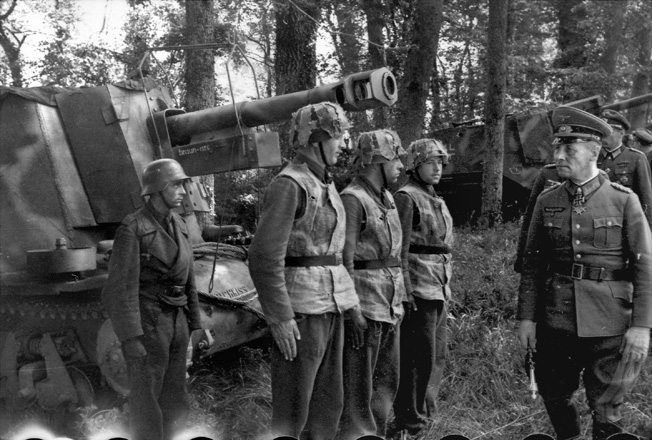
To see if Howard and his men had what it took, a three-day exercise was conducted, with the troops required to seize three bridges intact and hold them until relief arrived. They succeeded and ensured their place in the vanguard of the entire invasion force. After the exercise Howard was told what his mission would be and that D Company would certainly be “the first British fighting force to land on the continent.”
They would not be alone, however. Gale wanted the coup de main effort to be reinforced, so Howard was told he could choose any two platoons from his regiment to be attached to his company. Also, a detachment of Royal Engineers from the division’s 249th Field Company would provide the expertise needed to disable any demolitions placed on the bridges by the Germans. Howard chose two platoons from the Ox & Bucks B Company to join his unit.
Six Horsa Gliders
The detailed plan for the attack came together over the coming months as the troops trained hard for their task, even though due to secrecy needs they did not know their exact mission. They would embark aboard six Horsa gliders that would each hold a platoon plus a small group of engineers. Howard wanted flexibility in his plan and equipped his platoons so each could attack a bridge by itself if necessary. During training he envisioned the different ways things could go wrong and tried to compensate. Also, each platoon cross-trained so it could perform in another’s role as needed. The training was arduous, but it bonded the men together. Howard also had good officers who shared hardships with their men and were aggressive and capable.
Along with their training, the glider troops benefited from access to constantly updated intelligence estimates. Photo reconnaissance flights provided timely images of the bridges and their defenses; over time the British noted improvements being made, such as the installation of an antitank gun and the construction of bunkers. Another invaluable source of information was the local French Resistance network. This included Madame Vion, who ran a maternity hospital on the south end of Benouville. She collected information from resistance operatives and passed it on to her contacts in Caen during her periodic trips there for medical supplies.
One of her primary sources of information was the conversation at the Café Gondree, located on the west bank of the canal near the bridge. The owners, Georges and Therese Gondree, simply kept their ears open and listened to the conversations of the various German soldiers who frequented the establishment. Therese was from Alsace and spoke German, while Georges spoke some English.
The intelligence effort gave them a fairly accurate picture of the bridge’s defenses. About 50 troops guarded the two spans, drawn from the 736th Grenadier Regiment of the 716th Infantry Division. This unit was composed largely of conscripted men from German-occupied nations, such as Poles and Russians with some, mostly older, Germans mixed in. German NCOs and officers led the formation. The bridge defenses were commanded by Major Hans Schmidt.
From the layout of the defenses, the Germans expected any concerted attack on the bridges to come from the east. Most of the machine guns at each bridge were oriented to the east while the single antitank gun installed at the canal bridge was located on the east side as well. Several bunkers were also constructed, and trench systems radiated around the bridges for riflemen and machine gunners. Barbed wire entanglements were also emplaced, but these were mounted in such a way as to be easily movable.
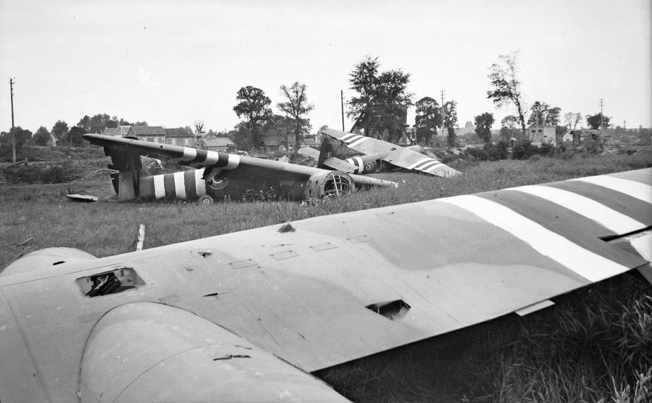
Preparations had been made to destroy the bridges if necessary, but the explosives themselves had not been installed. This was due to fear of raids by the French Resistance which might try to blow up the bridges anyway. Some of these defenses, such as the antitank emplacement and the bunkers, were begun only the month before on orders of Field Marshal Erwin Rommel, who toured the coastal defenses and found them wanting. He ordered a number of improvements throughout the area, including the upgrades to the bridge defense network.
The Night of the Drop
Now, on the night of June 5, the six gliders hung from tow lines attached to Handley Page Halifax bombers, the whole group making its way across the English Channel. Three platoons would land at the canal bridge in a field to its southeast: 25 Platoon, led by Lieutenant “Den” Brotheridge, would lead off with three men detailed to throw grenades through the embrasures of the bunker on the east bank, thought to be where the demolition controls were kept. The remainder of 25 Platoon would cross the bridge itself and seize the western side. Lieutenant David Wood’s 24 Platoon would remain on the east side and clear all the German positions there. Finally, in the last glider to land, Lieutenant R. “Sandy” Smith’s 14 Platoon would follow Brotheridge’s men across to the west side and reinforce them.
The other three platoons would land near the river bridge to its northwest. Lieutenant Tony Hooper’s 22 Platoon was tasked to overrun the defenses and swarm the east side of the bridge. The men of 23 Platoon under Lieutenant H.J. “Todd” Sweeney would stay on the west side and take hold of the defenses there while Lieutenant Dennis Fox’s 17 Platoon in the last Horsa would reinforce the first two groups.
The sappers attached to each platoon would disable any explosives on the bridges while the glider pilots would unload and distribute the extra ammunition and equipment. Once taken, the code words “Ham and Jam” would be sent to confirm the seizure of the bridges. With both in British hands, the glider infantry would hold until relieved by the 7th Battalion, 5th Parachute Brigade, whose commander would take over when he arrived.
As the platoons sat in their gliders, the soldiers tried to pass the time by singing. Private Wally Parr led the group with a song called “Abby, Abby, My Boy.” Parr had been in the company practically since the beginning and was once almost RTU’d (Returned To Unit) for a disciplinary infraction. Howard had personally intervened on Parr’s behalf, believing the man would be an asset once in action. Parr stayed in the company but lost his corporal’s stripes. Now, with his loud, cockney-accented voice, he sang one song after another.
A Rough Landing
In the front of the glider, Staff Sergeant Jim Wallwork concentrated on piloting the aircraft once it was free of the bomber. A series of turns had to be made during the descent, exactly on time, or the glider could wind up miles off course. Next to him co-pilot Staff Sergeant John Ainsworth held a stopwatch to time each turn and phase of the landing. The other glider pilots likewise prepared for their landings.
Seated nearby, Private Willy Gray had a much more serious problem. Before taking off he helped himself to plenty of tea and a bit of rum and now had to urinate badly. With nothing to do for it, he joined in the singing. Taking a break from his own singing, Parr asked loudly, “Has the major laid his kit yet?” On every training flight, Major Howard had suffered from airsickness and experienced the natural result. For whatever reason, this time his troubled stomach was calm, and its contents remained in his belly. Howard took the joke well and laughed with the rest of the glidermen.
Finally, at 0007 hours, June 6, 1944, it was time to cast off the tow line. The bombers roared off for their diversionary attack on Caen, and the gliders began their descent toward the bridges. At three minutes and 42 seconds, Ainsworth said simply, “Now!” and Jim Wallwork turned the glider to starboard. The glider lost altitude rapidly, and seconds later Ainsworth gave the signal for a second right turn that brought the glider onto course for the landing field next to the canal bridge. At first they could see nothing ahead of them, only the antiaircraft searchlights and tracer fire behind them in Caen, firing on the bombers.
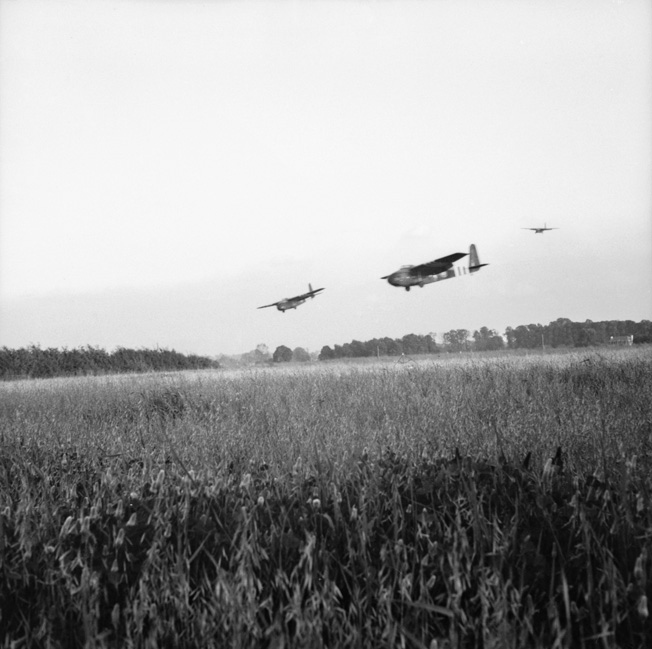
Then, just as in their training, there it was. The bridge with its distinctive shape, the bunker, the antitank gun, and fields around it all were clearly visible. The barbed wire sat on the north side of the landing strip. During training Howard told Wallwork he wanted the nose of the glider right against the wire. The pilot was dubious as to whether it could be done but promised he would do his best. At 0016 hours, he did just that. The glider touched ground and skidded across the landing field, coming to a halt right at the wire.
The aircraft stopped so suddenly both pilots were thrown out the front, crashing through the windscreen and landing in front of the glider. In the rest of the glider, 25 Platoon sat stunned for a few seconds. Major Howard was unconscious for just a moment. His seatbelt had broken, throwing him forward where he hit his head on the ceiling. The impact forced his helmet down over his eyes. When he came to, he thought he was blind for a moment.
“Gun Out!”
Behind him, Lieutenant Brotheridge opened the glider’s door and told a nearby Bren gunner, “Gun Out!” The platoon quickly recovered and got out. The bridge was a mere 30 yards away. Private Gray, also carrying a Bren gun, charged toward the bridge; his mission was to clear a barn on the west side. As he neared the span he saw a German soldier and fired a burst at him. The enemy soldier went down, and Gray carried on across the bridge, firing as he went. He reached the barn and tossed in a grenade before emptying the rest of his magazine into the structure. When he went inside to check, it was empty.
Meanwhile, Wally Parr’s mission was to knock out the machine-gun bunker with grenades. His had gone so dry that his tongue stuck to the roof of his mouth. He finally freed it by shouting, “Come out and fight, you square-headed bastards!” By the time he got onto the bridge, he had recovered. Now shouting “Ham and Jam!” he went to the bunker, opened the door, and threw in a grenade. When he heard someone still alive inside, Parr pulled the door open again and sprayed the interior with his Sten gun.
As Wally Parr was clearing his bunker, Lieutenant Den Brotheridge was leading his platoon across the bridge. Someone on the German side fired a flare which now hung over the scene. Perhaps the flare’s light exposed the young officer to enemy view or it may have been simple bad luck, but just then a burst of machine-gun fire lashed out across the bridge. A bullet hit Brotheridge in the neck, and he fell to the ground mortally wounded. So intent were his men on the attack no one noticed he had fallen until moments later.
Wally Parr later recalled just reaching the café when someone called out, “Where’s Denny?” He looked around and saw someone lying in the roadway. Running back to him, Parr discovered it was Brotheridge. The private was struck by the idea of his lieutenant spending so much time preparing for this night only to die in the first minutes. “My God!” he thought. “What a waste!”
German Sentries Overwhelmed
To the German sentries guarding the bridge that night, the attack was overwhelming. Private Vern Bonck, a young Polish conscript, had just turned over his post to Private Helmut Romer, an 18-year-old from Berlin. Bonck ran into another Polish draftee, and the two headed off to visit a late-night bar. Romer and the other sentry now on duty were to face the British attack. The antitank gun was unmanned, and the soldiers in the bunker and trenches dozed at their positions. They had ignored the antiaircraft fire and distant bombing; such things were commonplace by now. They had dismissed the noise made by the glider landing as falling wreckage from a bomber, again not uncommon.
There was no mistaking what they saw next. Dark, screaming figures raced out of the darkness, faces blackened, firing automatic weapons. The young Romer did the only thing he could; he turned and ran the other way, shouting “Paratroopers!” as he ran past the other sentry, who apparently fired the flare before being shot down, possibly by Brotheridge. The soldiers in the bunker and trenches were quickly overwhelmed.
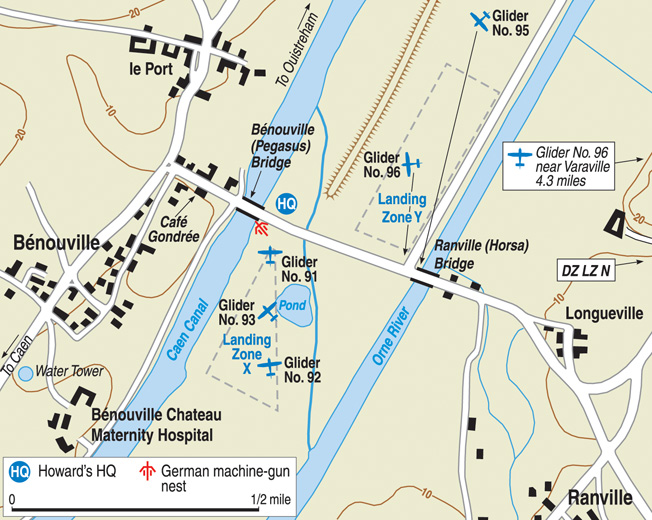
A short distance up the road leading west, veteran German paratrooper Sergeant Heinrich Hickman heard the weapons fire and recognized it as British. He had been out collecting some soldiers on guard duty and was on his way back to his unit. He told two of the soldiers to get out of their car and take the right side of the road while he and the other two took the left. They had crept to within 50 meters or so of the bridge when Hickman spotted the British soldiers advancing toward him. What he saw frightened even him. He remembered that it was “at nighttime when you see a Para running with a Bren gun, and the next with a Sten, and no cover round my back, just me and four youngsters who had never been in action. So I could not rely on them—in those circumstances, you get scared…. So I pull my trigger, I fire.”
His first target was Billy Gray, who was just reloading after spraying the barn. Gray fired back, but neither hit the other. The British soldier ducked back into the barn, so Hickman shifted his fire toward the bridge. Inside the barn, Gray finally took a moment to empty his bursting bladder. Outside, Hickman expended the rest of his ammunition and realized it was time to go. Motioning to the four privates, they all got back into their car and raced off toward Caen. With the bridge in British hands his 15-minute trip back to his unit would now take six hours as he diverted around Caen.
At the bar, Vern Bonck rushed out into the street with his fellow Pole when the firing started. They ran up the street to the intersection west of the bridge. They took one look at the pitched battle and ran south on the road toward Caen. After running a while they stopped and talked about what to do. Their conclusion was simple; the pair fired all their cartridges and ran back into Benouville. There, they reported to their superiors that enemy paratroopers had attacked the bridge and that they had fought until running out of ammunition before retreating to make their report.
Two More Gliders Land
By now the other gliders had landed and more British troops surged onto the bridge. The second glider, containing Lieutenant David Wood’s 24 Platoon, skidded to a halt mere yards from the first. It broke in two pieces, and Wood was thrown out onto the ground, though he managed to keep a grip on the bucket of hand grenades he was carrying. On the ground next to him were Private Harry Clark and several others. Fortunately, none of the grenades detonated. They moved off, and Clark remembered helping to clear the trenches. He ran past an abandoned MG34 machine gun, an unfired belt of ammunition hanging from its feed tray.
“There was a lot of firing going on and a lot of shouting,” Clark said. “We cleared the trenches on the other side very quickly … nothing really in the way of strong opposition.”
The third glider, carrying Lieutenant Sandy Smith’s 14 Platoon, had a hard landing as well. It bounced heavily and sent Smith flying through the cockpit Perspex. He landed in front of the glider, stunned. Luckily, Lance Corporal Madge came up to him and said, “Well, what are we waiting for, Sir?” Somehow, that snapped Smith back into focus, and he led his able men toward the bridge. Several of his men were injured and stayed in the glider for the time being, including Captain John Vaughan, the group’s medical officer. Tragically, Lance Corporal Greenhalgh, likely out of his senses as well, wandered into an undetected marsh pond near the glider and drowned.
As Smith moved onto the bridge limping from an injured knee, a German threw a grenade at him. A fragment from the blast struck the officer in the wrist, and the German tried to flee. “I saw him climbing over the wall … I shot him as he was going over—I made certain too. I gave him quite a lot of rounds, firing from the hip—it was very close range,” Smith recalled. Madge ran up and asked if he was all right. Smith inspected his torn wrist and replied. “Christ! No more cricket!”
Champagne at the Café
Smith moved on and was soon outside the Café Gondree. Upstairs, Georges poked his head out to see what was happening. Smith saw him and in the heat of the moment fired at him. Luckily, the fire went high and the Frenchman ducked in time. He took his wife and daughters to the cellar to await the battle’s conclusion. A short time later there was a knock at the café door. Georges opened it and saw two British soldiers in black face paint. They asked in French if there were any Germans in the building. After telling them there weren’t, the café owner beckoned them inside. There, he took the apprehensive men toward the cellar, using gestures to convey his family was down there.
Finally, one of the Englishmen must have realized what Georges meant, because he told his comrade, “It’s all right, chum.” When the Frenchman realized they were speaking English, he began crying for joy. His wife and children began kissing them until their faces were smudged with the black camouflage paint. Wally Parr recalled later giving one of the daughters, five-year-old Arlette, a chocolate bar. It was the first she had ever had.
Within a short time the café was converted into an aid station. Casualties were brought into the main room while the dining table became a makeshift operating table. Captain John Vaughan would practice his skills here aided by Therese Gondree, who was a trained nurse. Out in the yard Georges grabbed a shovel and dug up some 90 bottles of champagne he had buried when the German occupation began in 1940. This he began giving out to whichever British troops came to the café. As the day went by many of the glidermen found an excuse to go to the café and get their free drink.
“To Hell With it, Let’s Get Cracking”
Meanwhile, Lieutenant Wood thought his platoon had finished clearing the buildings near the bridge and had started back to report to Major Howard with his platoon sergeant and batman. As they moved off, a hidden German fired a burst of submachine gun fire that managed to hit all of them. Wood collapsed with a wound to the leg. Luckily, the platoon medic, Lance Corporal Harris, came along quickly and treated him. Wood recovered, but the injury left him with one leg slightly shorter than the other.
Howard, who had set up a command post in the trenches near the bridge, initially was unaware he had lost two of the platoon commanders so early in the fight. His radioman, Corporal Tappenden, was with him. Howard first learned of the loss of Den Brotheridge. The loss of a key leader was only exacerbated by the fact the lieutenant’s wife Margaret was pregnant and due to deliver any day. Before long he learned all three of his officers were wounded or injured to some degree. Still, the canal bridge was in British hands.
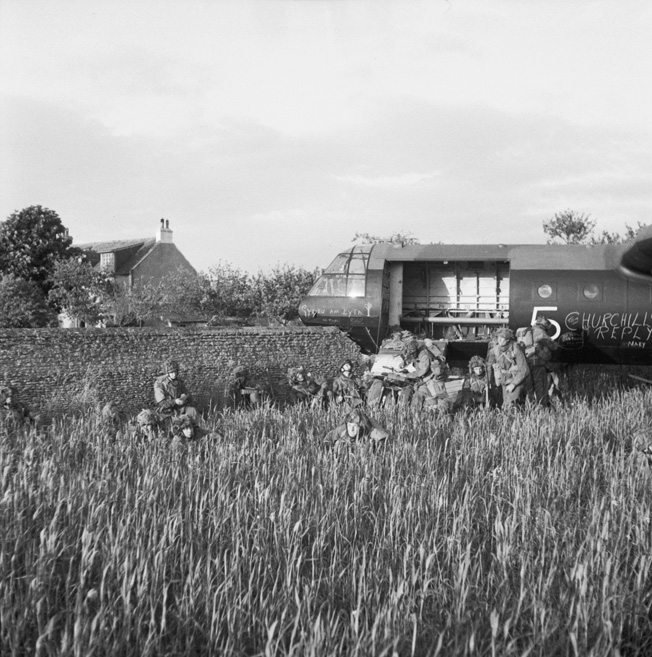
At the Orne River Bridge, the first glider to land carried 23 Platoon under Lieutenant “Todd” Sweeney. Unfortunately, the glider had struck an air pocket on the way down and landed hundreds of yards from the bridge, perhaps as many as 1,300 yards by one account. Its occupants had no choice but to unload and make for the bridge as quickly as possible. The glider with Lieutenant Fox’s 17 Platoon had better luck, at least in the landing. The touchdown was smooth, and Fox jumped up to open the door but it would not budge no matter how hard he pulled on it.
Then, Sergeant “Wagger” Thornton came up beside him and said, “You just pull it forward, Sir.” In his excitement Fox had been tugging the wrong way. With the door now open the soldiers poured out, but another problem arose. A soldier, Tommy Clare, did not have the safety properly engaged on his Sten gun. When he hit the ground the weapon was jarred and fired a burst into the air. Quickly the platoon formed up under the wing of the glider and listened.
Quiet greeted them and Fox said simply, “To hell with it, let’s get cracking.” The platoon moved out, and almost immediately a German machine gun opened fire from the far bank. Wagger Thornton was thinking ahead, however. He had already set up a 2-inch mortar. He put two bombs on the machine-gun position, and the crew fled into the dark as British soldiers sprinted across the bridge. One of them took over the now abandoned weapon and started firing at its former crew. Within a matter of seconds, the river bridge was also in British hands, this time without any casualties.
Minutes later, Sweeney and 23 Platoon arrived. The two lieutenants gathered to confer. Sergeant Thornton recalled Sweeney asking Fox what was happening. Fox, recalling their training back in England, replied, “The exercise went very well, but I can’t find no bloody umpires to find out who’s killed and who’s alive!” A message was sent to Howard via radio reporting the seizure of the bridge intact.
“Ham and Jam”
There was still no sign of the third glider, however, and ultimately there would not be. Carrying Lieutenant Hooper’s 22 Platoon along with the mission’s second-in-command, Captain Brian Priday, the last glider flew off course. It landed some eight miles away at the Varaville Bridge. So now Howard and his men had completed the first part of their mission. They had seized the bridges. Now they had to hold them with one platoon missing and several of their officers wounded, missing, or dead.
Considering this, Howard modified his plan. He felt the biggest threat to his position came from the west. The British 6th Airborne was landing in the area to the east of the river bridge and would soon saturate it, providing a level of protection. Indeed, at 0050 hours, the first wave of paratroopers flew overhead and dropped to the east around Ranville. The men of Company D had a front row seat as tracer fire and searchlight beams mixed with the descending parachutes. Meanwhile, radioman Corporal Tappenden started sending the signal, “Ham and Jam,” signifying both bridges were captured intact. After frustrating minutes of transmission, finally an acknowledgement was received. Howard ordered 17 Platoon to the canal bridge to bolster the defense.
When they arrived, Howard pushed them to the road intersection west of the bridge, where armored vehicles had been heard moving. Each glider carried a PIAT antitank weapon, but at the time only one could be found in working order. It was given to 17 Platoon with a few rounds of ammunition. Sergeant Thornton took the weapon and made ready. It was now about 0200 hours.
German Armor Meets PIAT
As the British soldiers took cover around the intersection, three German armored vehicles rumbled down the road in the darkness. Thornton took a position 30 yards from the T-junction and watched as the armored vehicle began moving cautiously toward the bridge. The Englishman later reported he was “shaking like a leaf” and it was hard to see. Nevertheless, he took careful aim and fired at the looming black shape. The spring-loaded spigot in the PIAT launched its bomb straight into the side of the enemy vehicle. Immediately, an enormous explosion shattered the night air and flames rose into the gloom. Four crewmen bailed out of the vehicle, and Wagger’s assistant on the PIAT opened fire on them. A fifth man was apparently trapped inside the flaming wreckage. The other two vehicles beat a hasty retreat the way they had come as the wreck continued to burn for over an hour.
Later reports variously identified the armored vehicle as a PzKpfw. IV tank, a captured French Char B1 tank, or a half-track. The unit identified as the first to reach the bridge in these vehicles was probably Panzer Pioneer Company 1. Such a unit would probably not have had tanks, but easily could have had halftracks. If they were loaded down with explosives and mines, as an engineer vehicle would be, it would explain the pyrotechnic display of burning and exploding ordnance. Whatever the case, the Germans made a mistake trying to advance with armor unsupported by infantry.
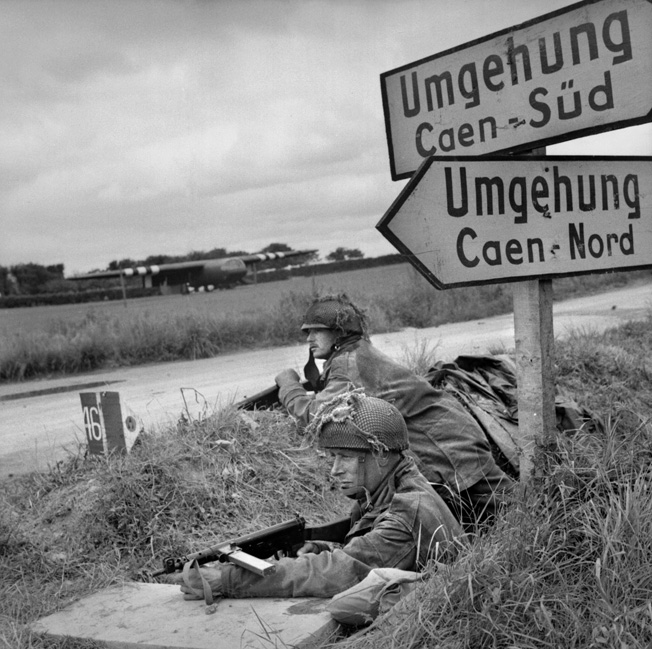
To the east at the river bridge, the glidermen were also meeting the Germans. Some of Sweeney’s 23 Platoon spotted a group of soldiers moving along the riverbank toward the bridge. Since the British 6th Airborne had landed, a challenge was given since it was expected the paras would gather at the bridge. A reply was heard, but it was in German. The defenders opened fire, wiping out the whole group. Sadly, when the platoon checked after daylight, one of the dead was found to be a British Para, a pathfinder apparently captured and brought along.
Capturing Major Schmidt
Shortly after the German patrol was wiped out, the sound of an armored vehicle was heard approaching from the east. An armored attack was of great concern to Sweeney. Like his comrades at the canal bridge, he had only a single PIAT. Within moments a German half-track came down the road followed by a motorcycle. Sweeney’s troops were hidden in the ditches alongside the road and watched as it approached. As it passed, the British opened fire, peppering the vehicle, but it continued across the bridge. The British troops on the other side also opened fire, and a Corporal Jennings threw a grenade into the open topped half-track as it passed him. The German vehicle veered, crashing into the ditch.
With the action over, the British checked the vehicle and found a wounded German, none other than the commander of the bridge defenses, Major Schmidt. Wounded in the leg, he was taken for medical attention by Captain Vaughan. Schmidt spoke good English and proceeded to harangue the doctor with threats of Hitler throwing the Allies back into the sea. Afterward, he begged to be shot for having failed in his duties. Finally, Vaughan gave him a shot of morphine; within minutes Schmidt was much calmer and even thanked the doctor for treating him. An alternate version of the story had Schmidt arriving at the bridge in a staff car after a night with his mistress, but that version turned out to be untrue.
Prisoners of War
Starting at 0300 hours, paras of the 7th Battalion, Parachute Regiment began trickling in to bolster the defenses. One of them was Lieutenant Richard “Sweeney” Todd, like the earlier mentioned Sweeney also nicknamed for the murderous barber (at the time, any British soldier named Todd or Sweeney seemed to earn the sobriquet). He and his paras began to relieve the glider troops, many of whom were sent to reinforce elsewhere. A number of them were sent to man the German antitank gun mounted in its defensive emplacement, called “Tobruk,” on the east side of the canal bridge.
Wally Parr was one of those on the gun. Quickly they discovered a warren of tunnels. Using a flashlight, Parr searched the tunnel under the gun and found a shaking, frightened German soldier hiding under a blanket. Nearby, Sergeant Thornton found three German soldiers sleeping in an underground barracks, rifles stacked nearby. Thornton removed the rifles, and Lieutenant Fox went to rouse the captured Germans. He pulled the blanket off the first man and said repeatedly in German, “Komm!” The sleepy German, thinking it was a friend joking with him, responded with an expletive.
Wagger Thornton collapsed in laughter at the spectacle, while Fox, taken aback, left the job to his amused sergeant. Thornton alerted the Germans to the seriousness of their plight with a short burst from his Sten gun. One German prisoner could not believe what had happened but eventually wound up sharing pictures of his family.
With sunrise, enemy snipers began firing on anything that moved around the canal bridge. A medic attending to Lieutenant Smith was shot through the chest as he stood up, crying “Take my grenades out!” He was worried another shot might explode the deadly little bombs on his chest harness. Thornton found two more prisoners, who turned out to be Italian slave laborers. Howard ordered them released and given food. To the surprise of the British, the two Italians went out to the landing field, now littered with Horsa gliders, and began putting up the antiglider poles they had been ordered to install by the Germans.
Overhead, a pair of Spitfire fighters flew by at 0800 hours, their pilots seeing the recognition signals the British laid out to show they had seized the bridges. One of the fighters dropped a package of the early edition newspapers from England. None of them mentioned the landings, but Howard recalled his men being more interested in the comic strip adventures of the character Jane. An hour later, Maj. Gen. Gale came walking down the road with two of his brigadiers, Nigel Poett of 5th Parachute Brigade and Hugh Kindersley of 5th Air Landing Brigade.
Dangers from the Water and the Air
Minutes after the officers arrived, Howard’s men faced their next threat, this time from the water. A patrol boat approached down the canal from the north, armed with a 20mm cannon. When it got within 50 yards, Corporal Claude Godbold fired a PIAT round striking the boat behind the wheelhouse. It slewed over to the bank, and the crew, including its fanatical Nazi commander, an insult-spewing teenager, was taken prisoner. Eventually a fed-up British soldier shut the boy up by hitting him in the shoulder with a rifle butt.
As the German boat crew was marched off to captivity, a second boat advanced from the south. Parr and the men manning the antitank gun were trying to get it operational. They had figured out how to load it but were still having trouble with the firing mechanism when one of the men simply tried a button and sent a round downrange. Reloading, they turned the gun on the boat but missed with their first shot. Adjusting, they fired a second round, which hit the boat now some 300 yards distant. The enemy craft turned around and withdrew, but not before Parr and company gave it a parting shot, another hit.
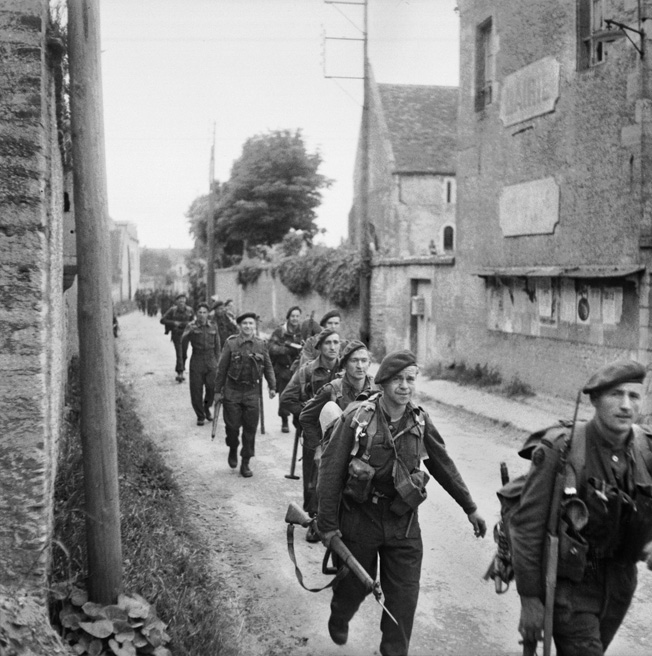
Now the newly formed gun crew was getting used to its weapon. Parr spotted a water tower he thought was a perfect spot for the enemy to observe the bridges. He put two rounds through it to the cheers of his fellow soldiers. Water gushed from the four small holes left by the round’s entry and exit; they had fired armor-piercing shot, which held no explosive filler. Parr next turned his attention to a chateau to the south. Suspecting it as well, he shouted “Number 1 gun, fire!” and proceeded to put three rounds into the building’s roof.
Howard was nearby and heard the shout, which he found odd considering there was only one gun in the area to begin with. Quickly he ordered Parr to cease fire; the chateau was actually the maternity hospital run by the local resistance leader, Madame Vion. After a while his fellow soldiers became annoyed with Parr for all his shooting; each time the cannon fired it attracted a swarm of bullets in return. Howard ordered him to stop firing.
At 1000 hours, the men of D Company saw a rare occurrence on D-Day, the appearance of a German aircraft overhead. The fighter roared down toward the bridge, sending the infantrymen scrambling for cover. The German pilot released a bomb that soared down, hit the bridge, bounced off, and splashed into the canal. Howard, having taken cover in the pillbox, was very impressed by the pilot’s accuracy but relieved his ordnance had been a dud.
Greeted by the Sound of Piper Bill Millin
Midday came and went, and D Company grimly held onto the bridge despite the incoming fire. Still, no concerted attack by forces materialized. With the airborne landings, the beach assaults, and everything else being thrown at them on June 6, mounting an attack to retake the bridges proved beyond the Germans that day. At 1330 hours, a few of the glidermen heard bagpipes. When they said so, several of their comrades scoffed at them, but after a few minutes the sound grew louder and closer. It was the 1st Special Service Brigade commanded by Lord Lovat. Since radio communication was spotty at best, he had posted piper Bill Millin at his side, knowing the bagpipe would be a good recognition signal. Lieutenant Sweeney recalled a D Company man standing up and playing a bugle in return. (Read more about other audacious heroes that changed the course of history inside WWII History magazine.)
Within minutes Lovat was shaking hands with Howard, who apologized for the incoming mortar fire. Apparently Howard thought it was coming from the area of the maternity hospital but had orders not to fire on it. The commandos began running over the canal bridge, where several were hit by the ever-present snipers. It was a hard crossing for the commandos, but at least now the linkup between the landing forces and the glider troops had taken place. Howard’s force would remain at the bridge, but the pressure had slackened somewhat with the arrival of Lovat’s troops.
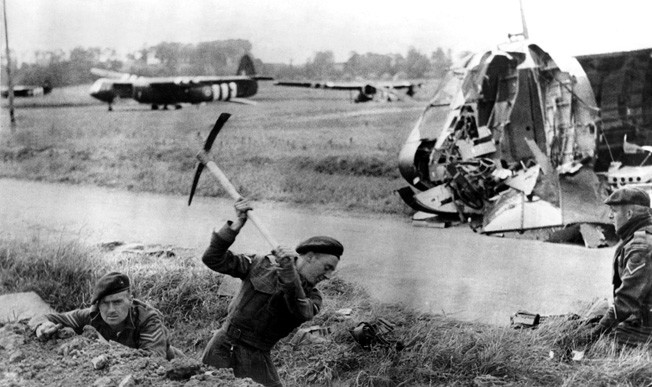
As afternoon turned to evening, German sniping and indirect fire were still coming in but lacked the strength to threaten D Company’s position. Just before nightfall, a massive British glider drop occurred, hundreds of them landing nearby. The bombers towing them dropped supply canisters from their bomb bays. Soon afterward, friendly soldiers riding in jeeps came pouring down the road and crossed the bridge on their way east. It was all a welcome sight.
Even more welcome was relief, which came a few hours later, not long before midnight. The 2nd Battalion of the Royal Warwickshire Regiment marched up to the bridge, and Howard turned the defense over to them. Company D had completed its mission. They were among the first Allied soldiers to land in France on D-Day and the first to enter combat with the Germans. It was a very impressive job for the company’s first time in combat. In their honor, the canal bridge was renamed Pegasus Bridge in recognition of the unit’s shoulder patch, while the river bridge became known as Horsa Bridge. Major Howard was awarded the Distinguished Service Order for his actions and leadership.
The Glider Infantry of Pegasus Bridge Remembered
Months after the battle, Wally Parr was reading an American magazine that contained an article about the battle for the bridge. It mentioned how the dastardly Germans, in their cruelty, had shelled the local maternity hospital during the battle. He would later say, “This was the first and last time I had shelled pregnant women and newborn babies.”
The seizure of the bridges was featured in Cornelius Ryan’s postwar book The Longest Day, widening publicity of this action. When the film version of the book was made in 1962, the role of Major Howard went to actor Richard Todd, the former para lieutenant who was at the bridge on June 6.
The Gondrees continued to run their café and served free drinks to veterans of D-Day each year on June 6. The café and bridge area are now considered national monuments, and a museum is nearby. The bridge itself was replaced when the canal was widened postwar, but the original bridge sits at the museum. Also on display are a Horsa glider and Major Howard’s beret along with various weapons and relics related to the battle. It is a fitting honor to the memory of a small group of men who risked so much doing their part to liberate France from the Nazi yoke.
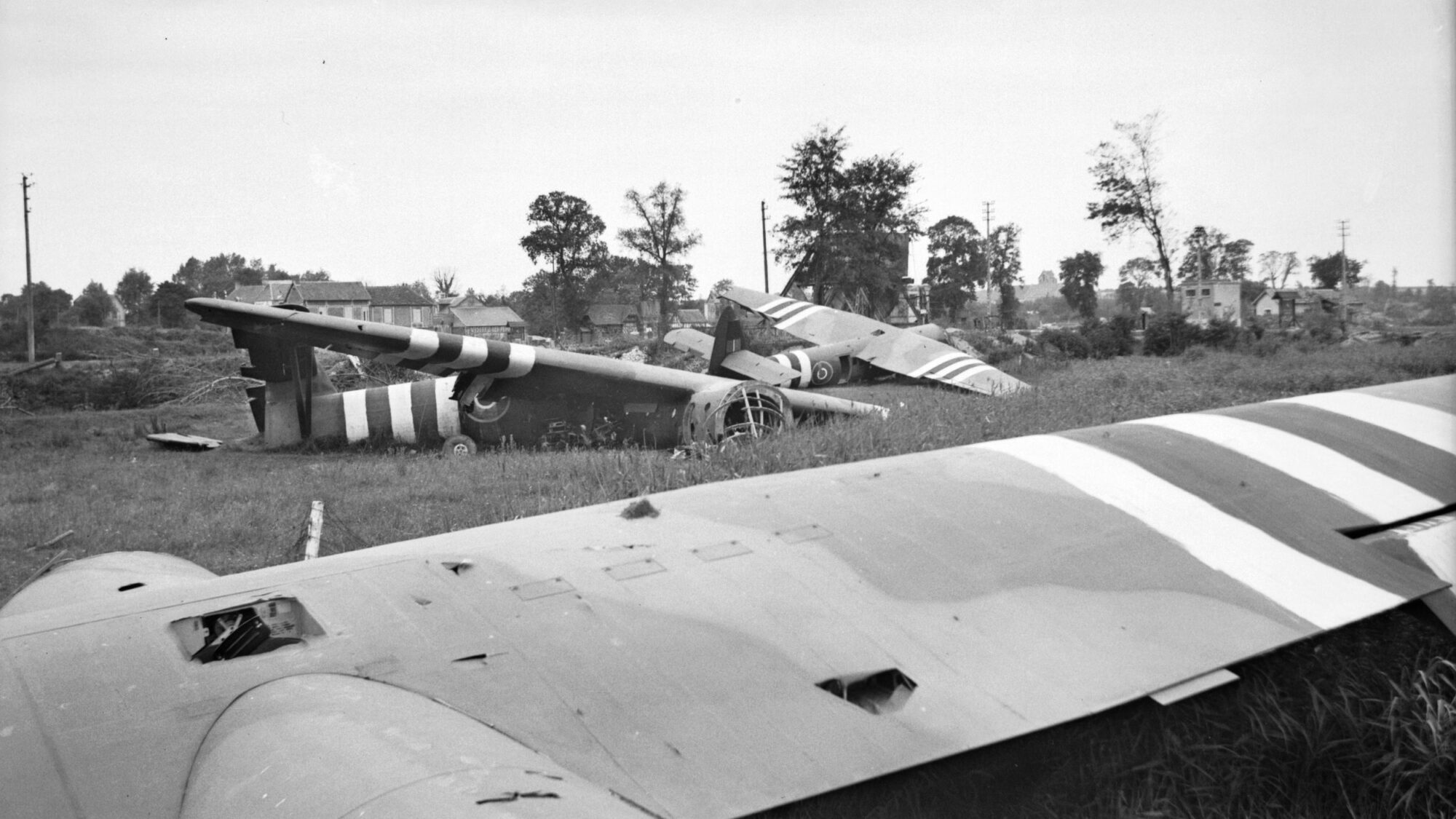
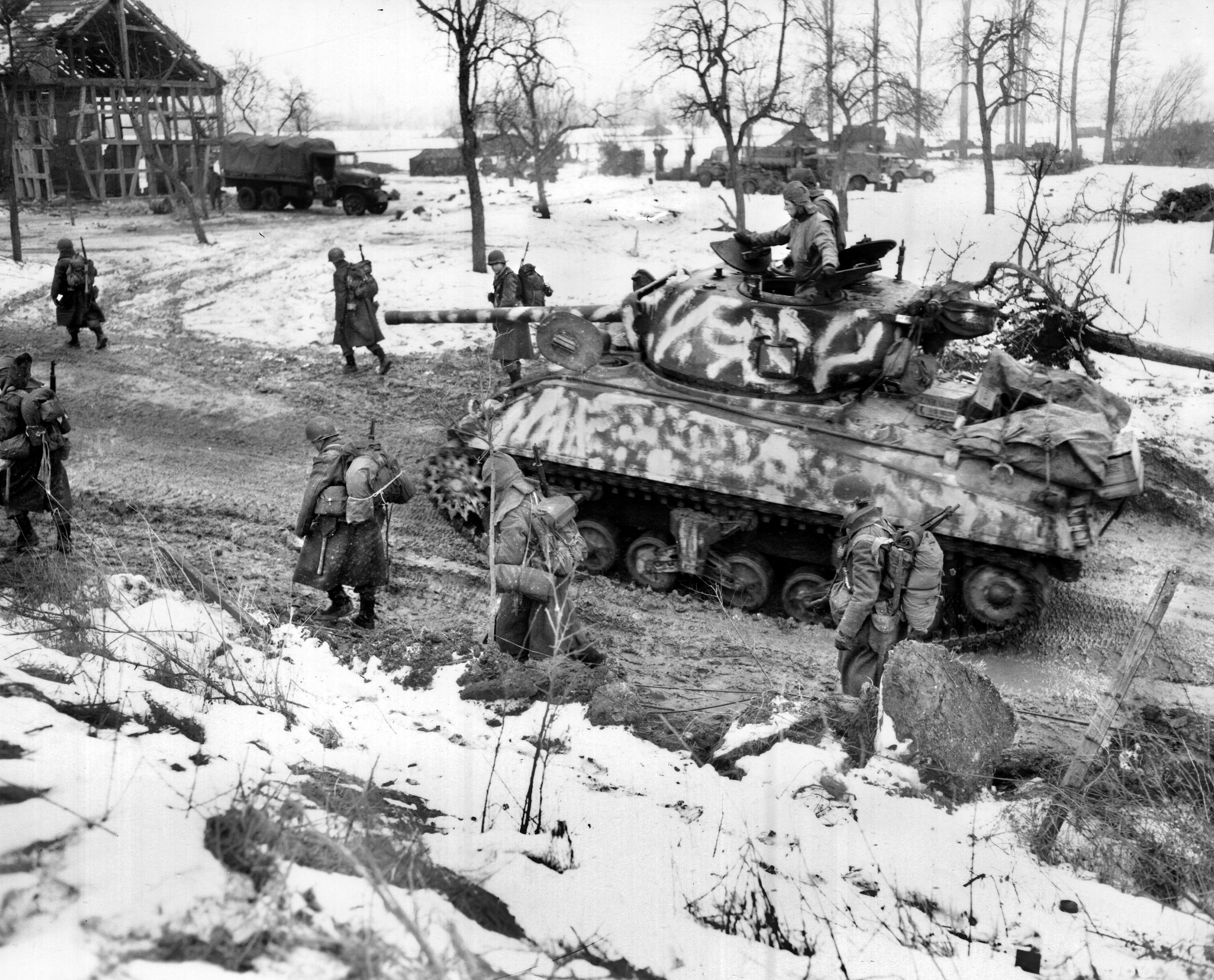
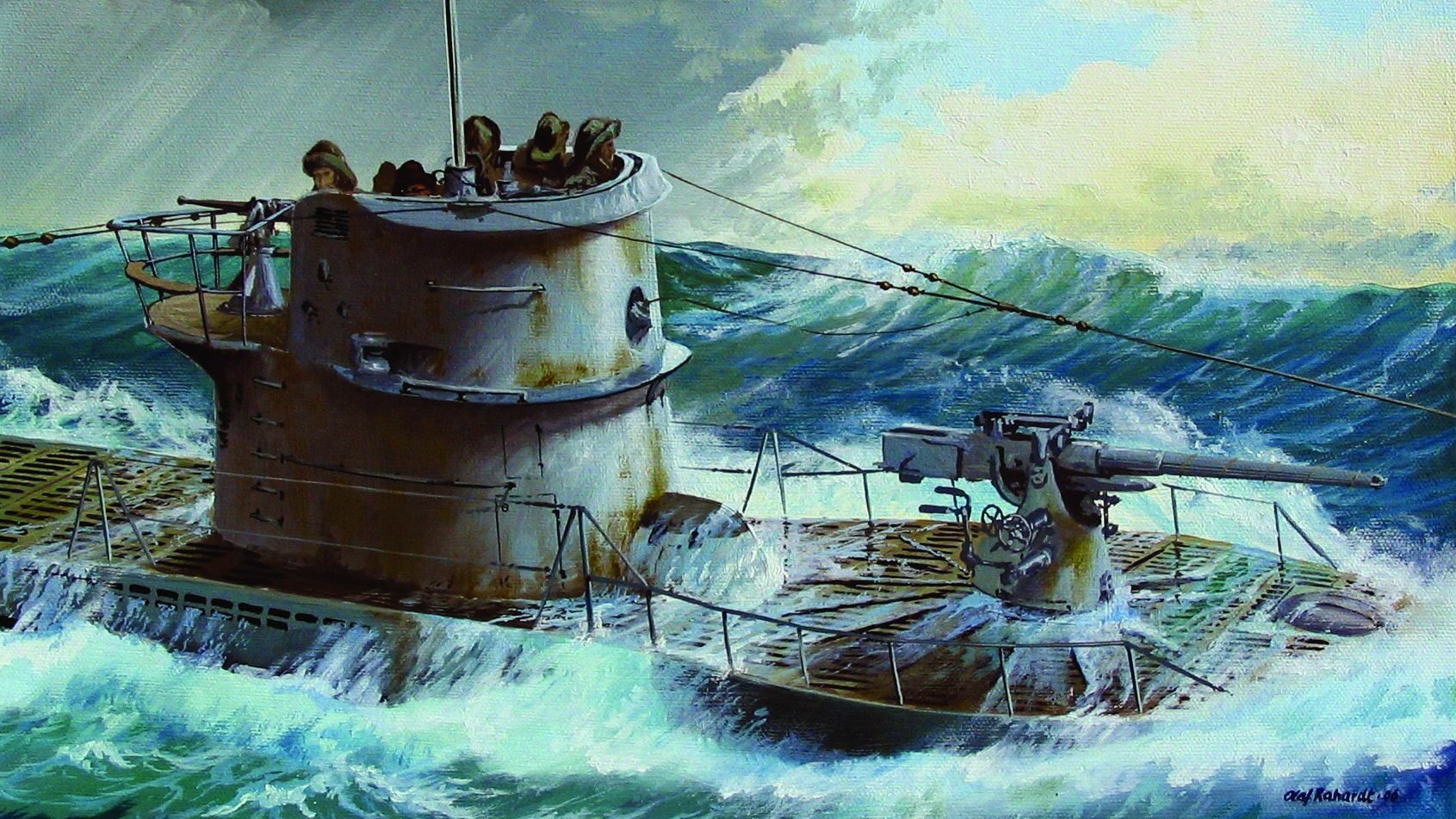
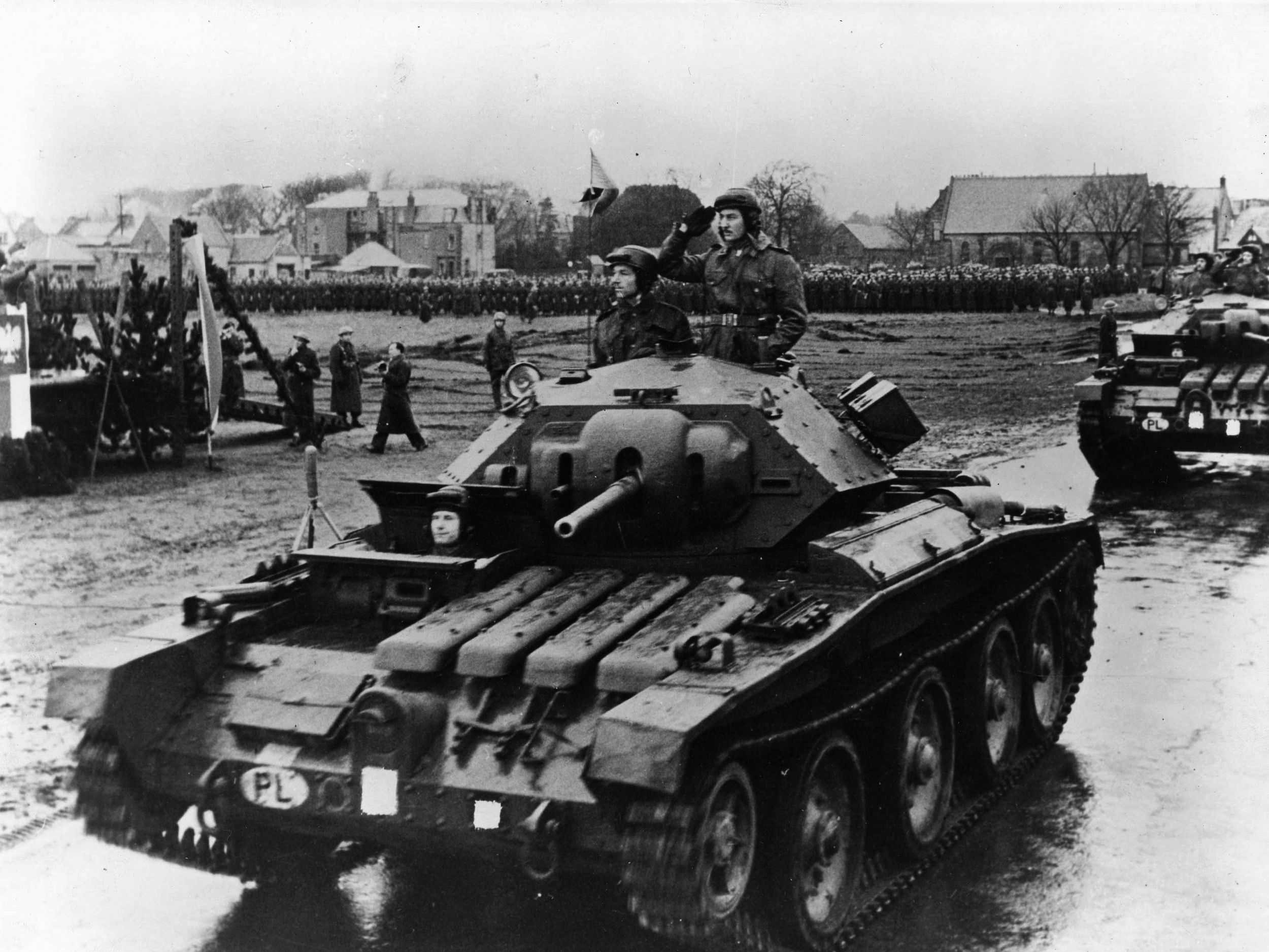
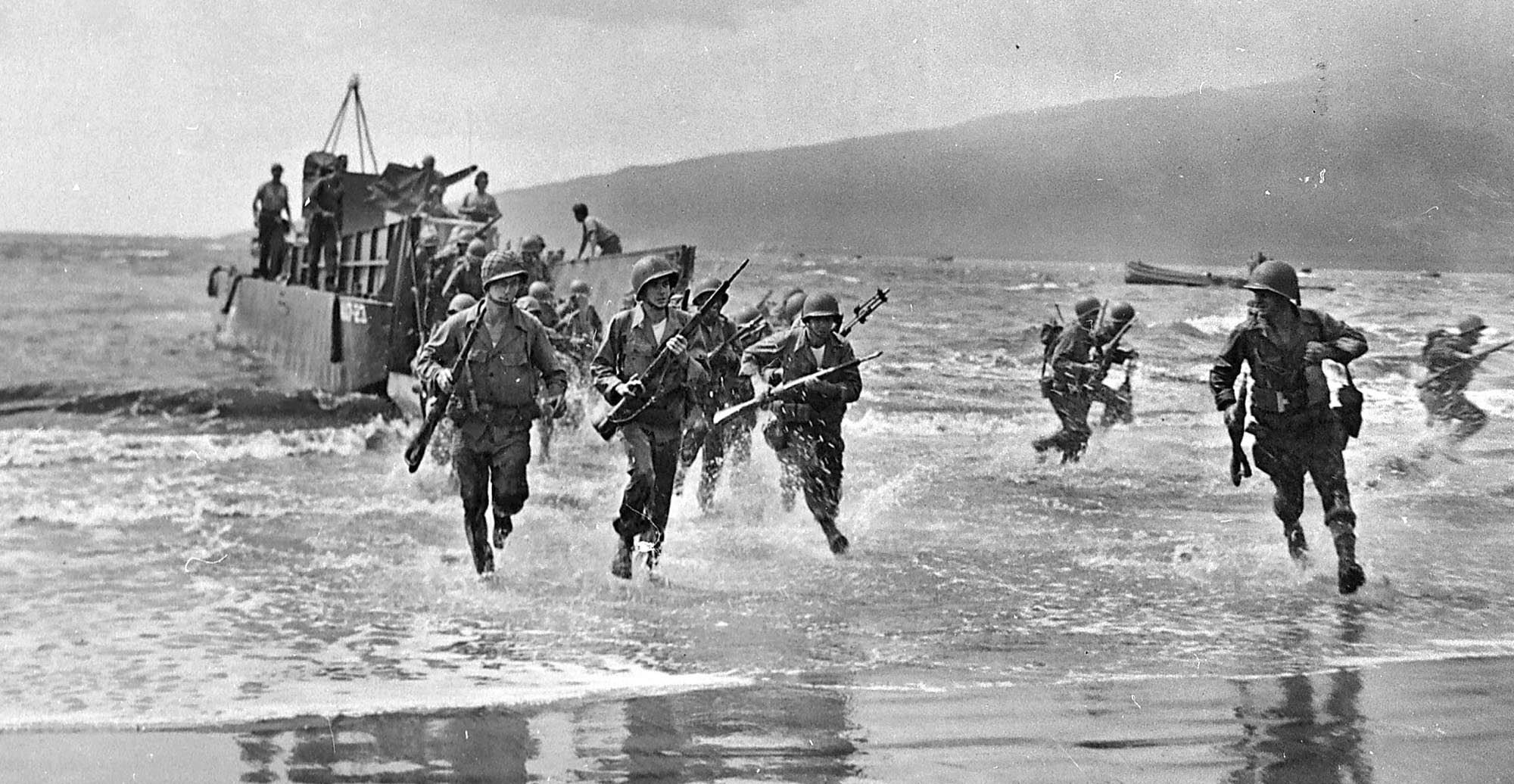
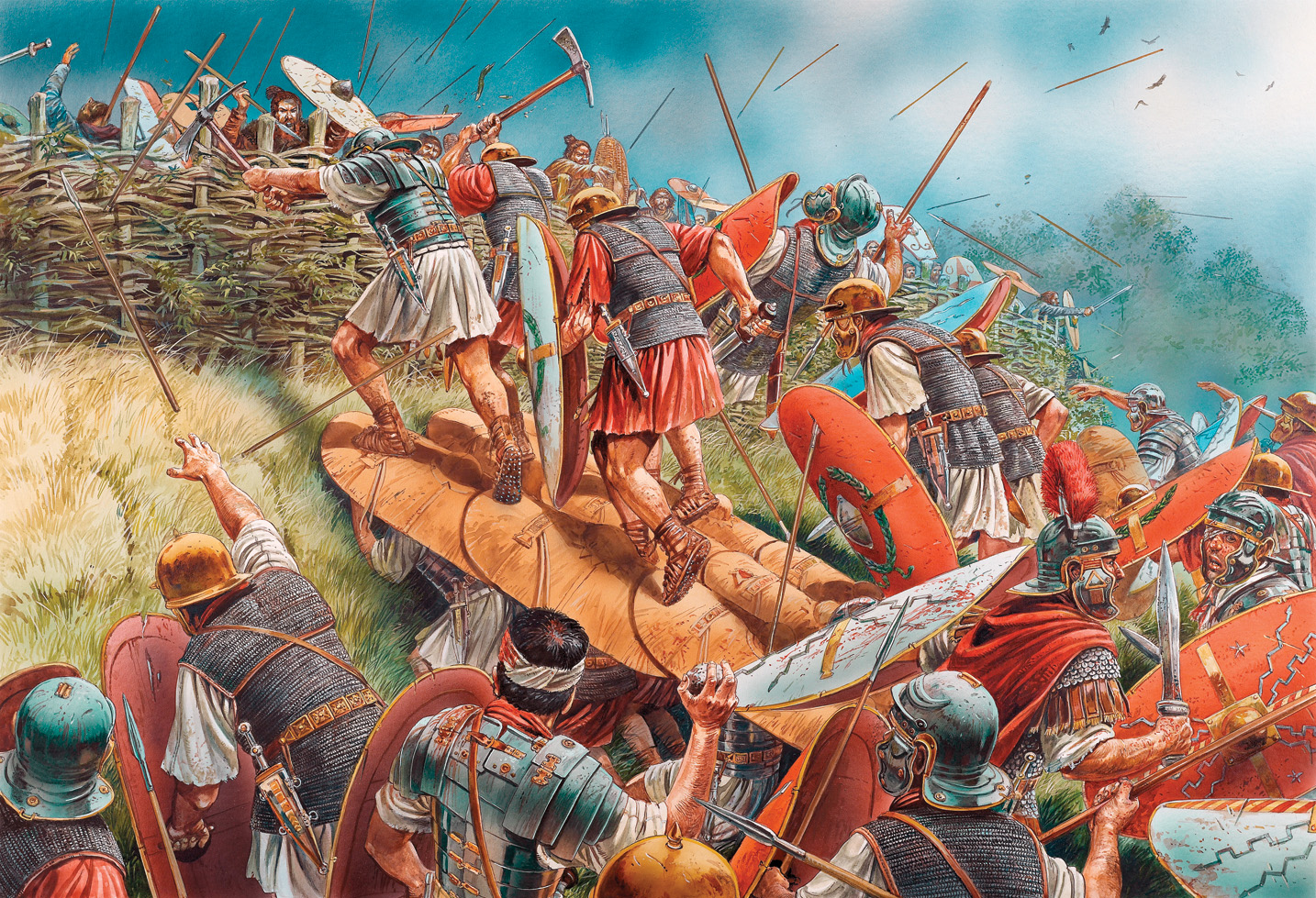
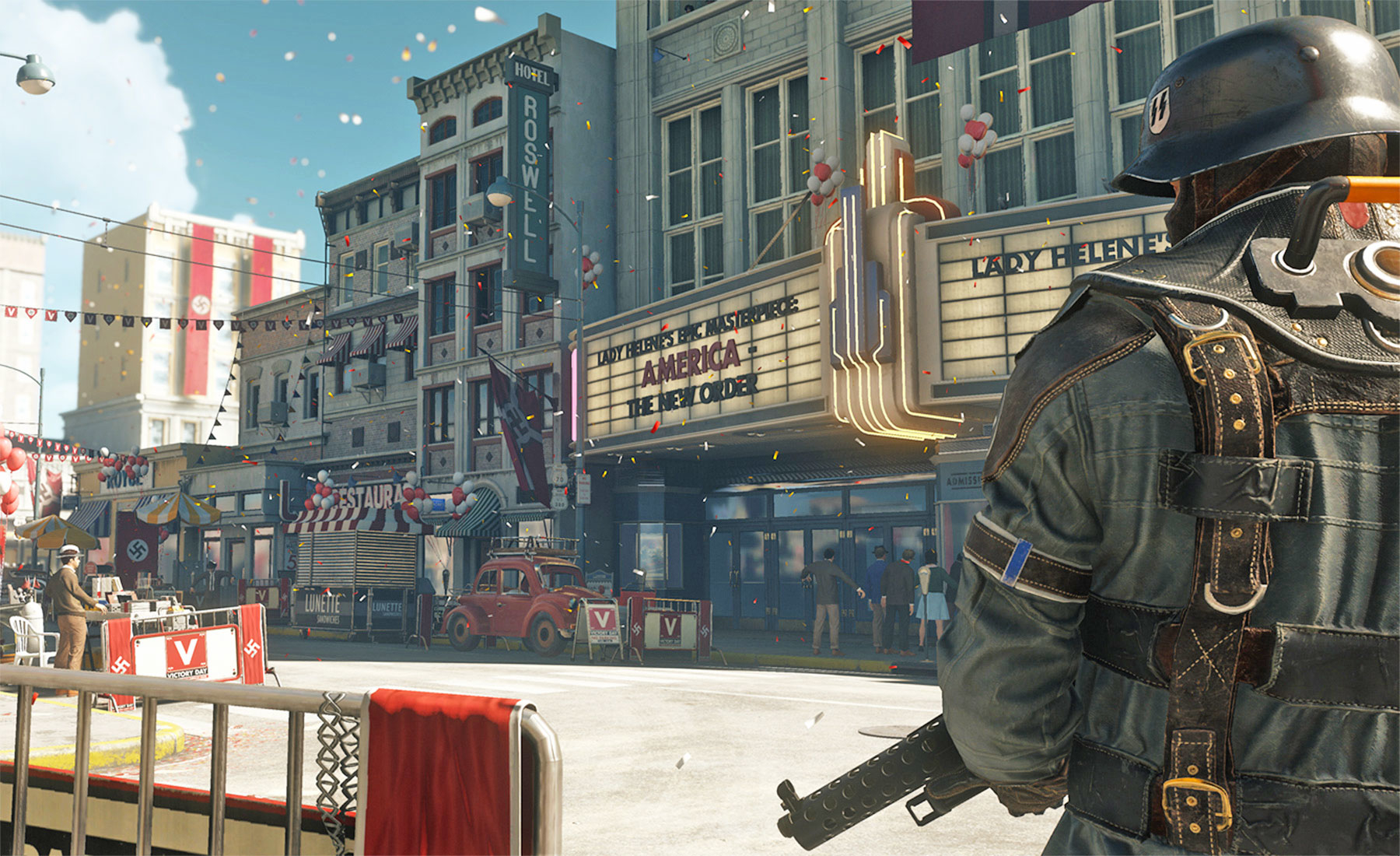
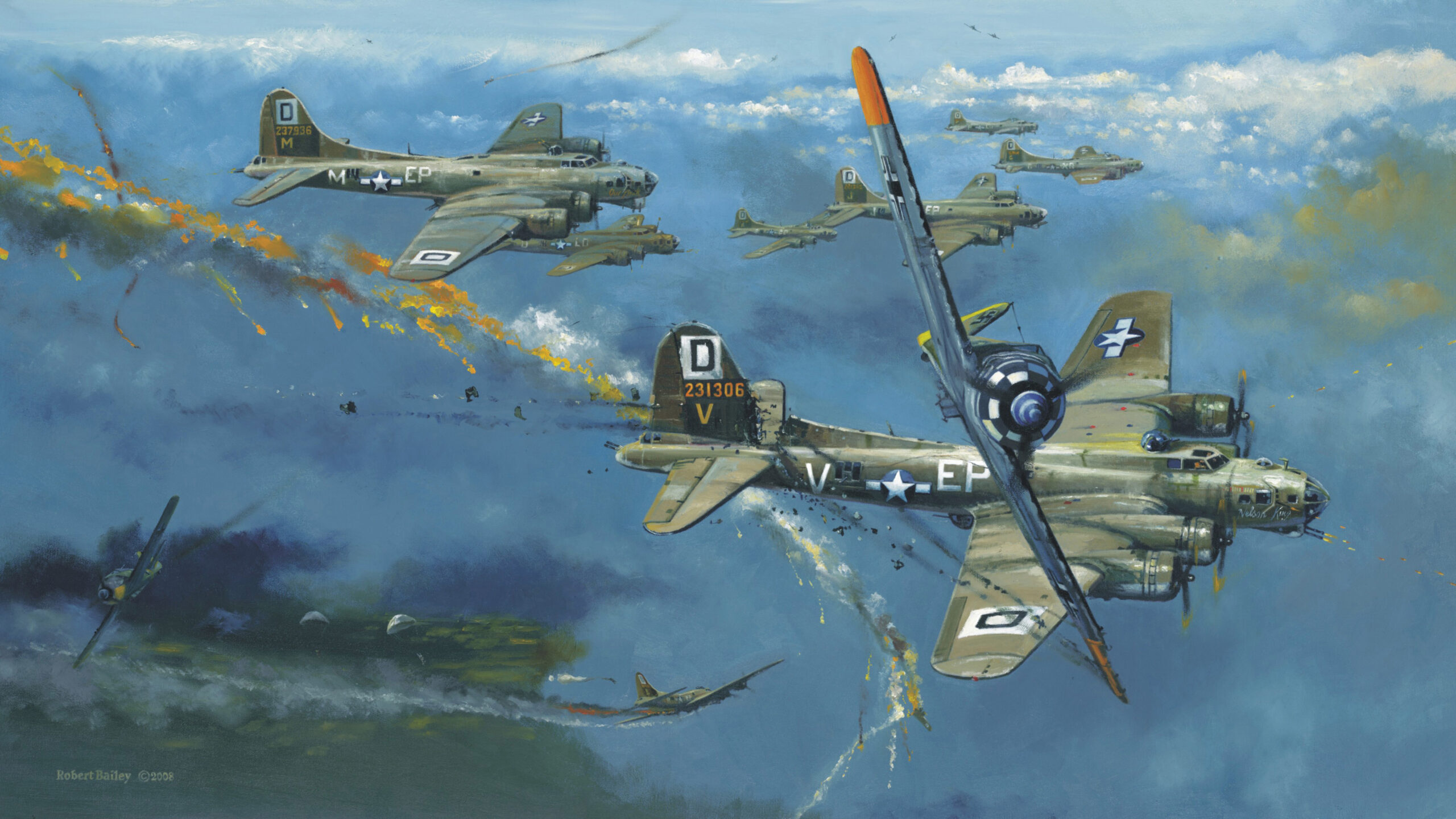
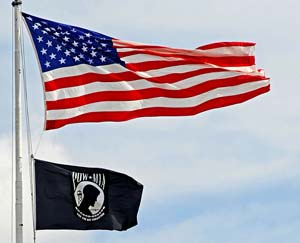
A very interesting and concise report of the capture of both the Pegasus and Horsa bridges. My Father was one of 6th Air landing Brigade who crashed in a Horsa glider on landing near the bridge. He injured his back on impact, he was also a veteran of Dunkirk with the B.E.F. His army number was 7592937 Richard George Wilkinson. R.E.M.E. and finished the war as a sergeant. I hope to visit the site of the landings and the museum in April 2021.
My father died in 1975.I am an 83 year old who is v ery proud of what he did in the cause of freedom.
Reg Wilkinson.